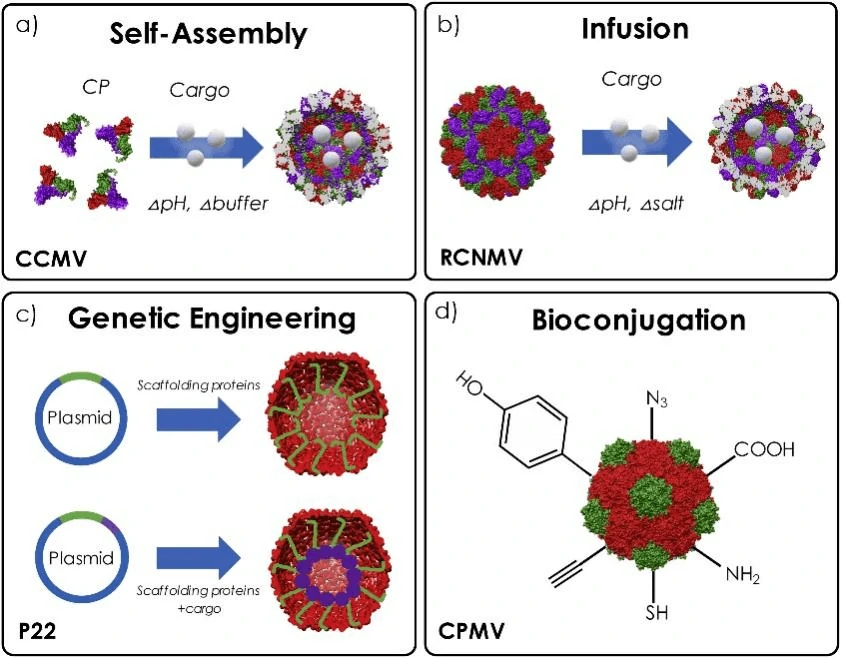Virus like particles (VLP) for drug delivery
VLPs are striking agent to deliver drugs, small molecules or nucleic acids due to their biocompatibility, biodegradability and targeted delivery. Different cargo-loading techniques have been used for loading either inside or outside the capsid. Different packaging system has been shown in fig. 2.
Disassembly/reassembly of VLPs or in vitro assembly of purified proteins into VLPs. The in vitro encapsulation of small molecules/nucleic acid depends on the interactions between the capsid proteins of VLPs. Changing the buffer conditions, pH, and ionic strength in in vitro disassembles the capsid and releases the viral genome. Following disassembly, viral capsids are reassembled to encapsulate the desired molecules using buffer exchange methods. VLPs are porous and the materials "breeze" inside and change shape under various conditions to permit the infusion of small molecules into the capsid’s cavity. This technique involves the addition of chelators to remove calcium and magnesium ions from the solvent leading to the formation of 11–13 Å-diameter channels to infuse the small molecules, later, the channels are closed by the addition of ion.
Genetic engineering based in vivo assembly is another technique for the encapsulation of peptides into VLPs. It involves the insertion of peptide encoding gene sequences into the genes encoding the capsid protein. The peptide and capsid protein can be expressed simultaneously or separately and it self-assemble through either in vivo or in vitro.
Besides encapsulation techniques, small molecules can also covalently attach to the VLPs with use of reactive amino acid side chains of the protein structure. Functional addressable groups are principally amines (Lys), carboxylates (Asp, Glu), thiols (Cys), and aromatic groups (Tyr, Trp) on the capsid are utilized for conjugation.

Fig. 2. Strategies to carry cargo using VLPs include: a) self-assembly around cargo by altering pH and buffer conditions with CCMV, b) infusion of cargo within RCNMV due to changes in pH and salt concentrations, c) genetic engineering techniques utilizing genetically conjugated scaffolding proteins to encapsulate drugs within P22, d) bioconjugation onto CPMV using exterior surface-exposed residues. (Reference: Chung YH, Cai H, Steinmetz NF. (2020) Viral nanoparticles for drug delivery, imaging, immunotherapy, and theranostic applications, Advanced Drug Delivery Reviews, 156:214-235)






 View the Knowledge base of virus like particles (VLP):
View the Knowledge base of virus like particles (VLP):